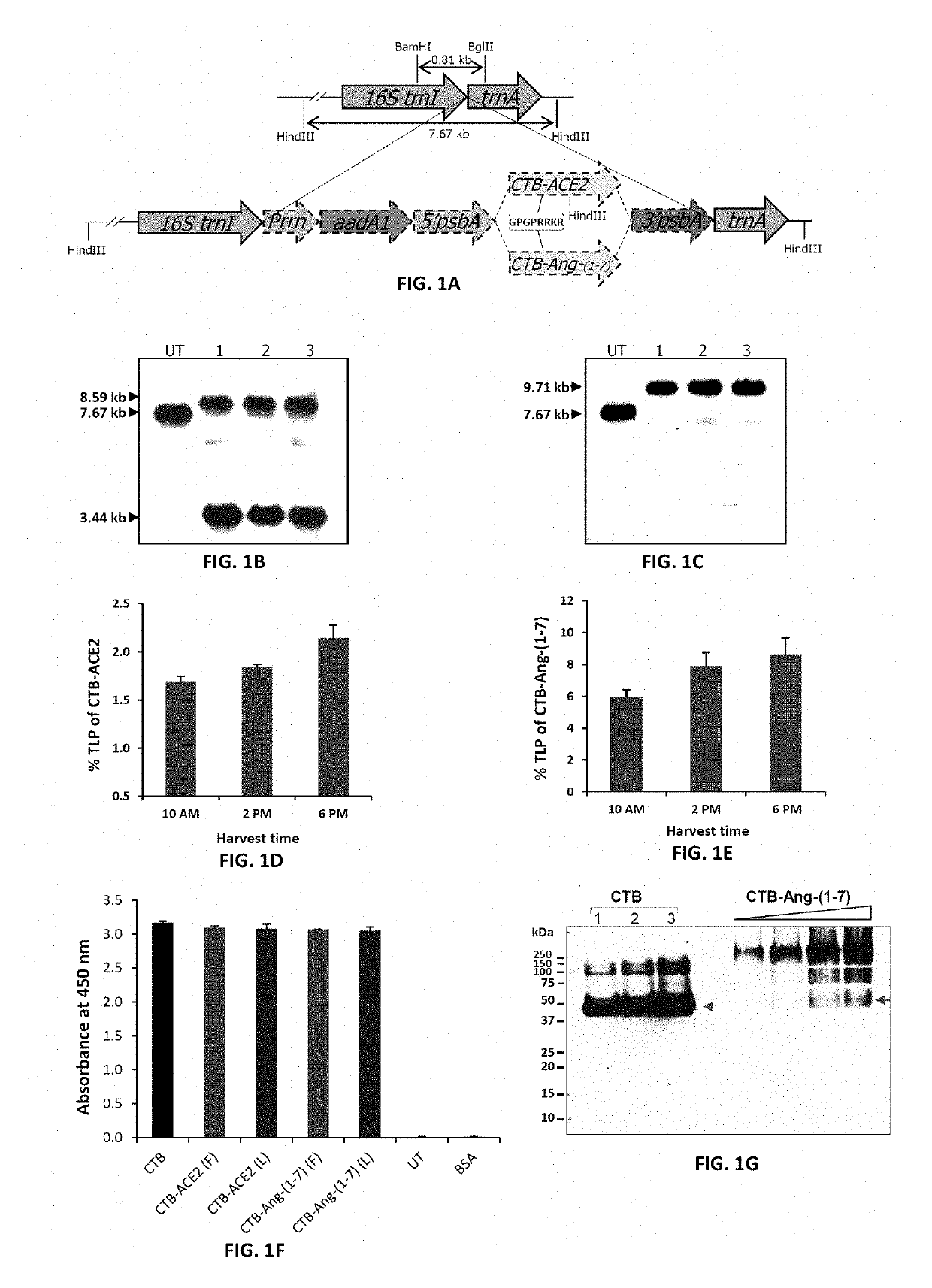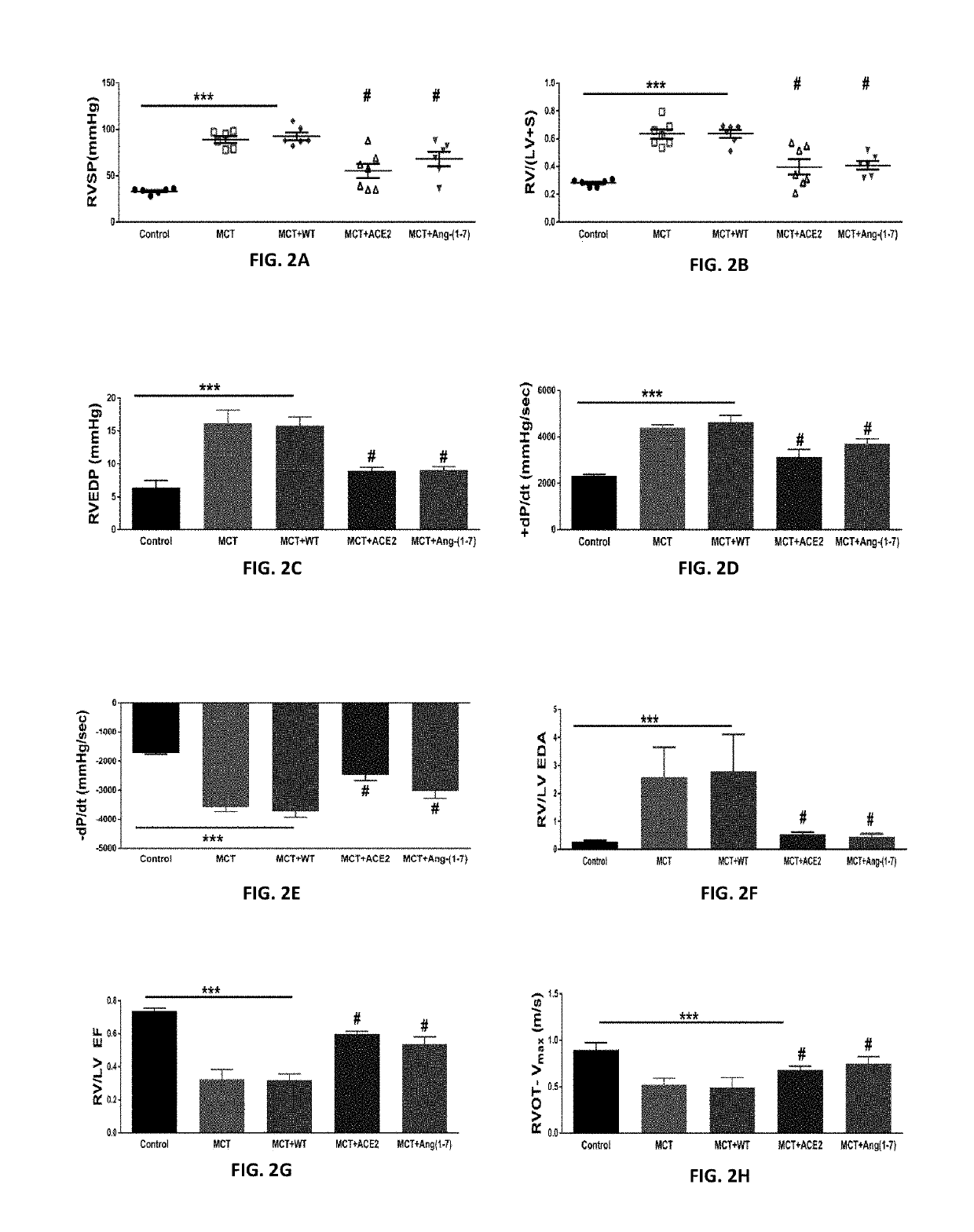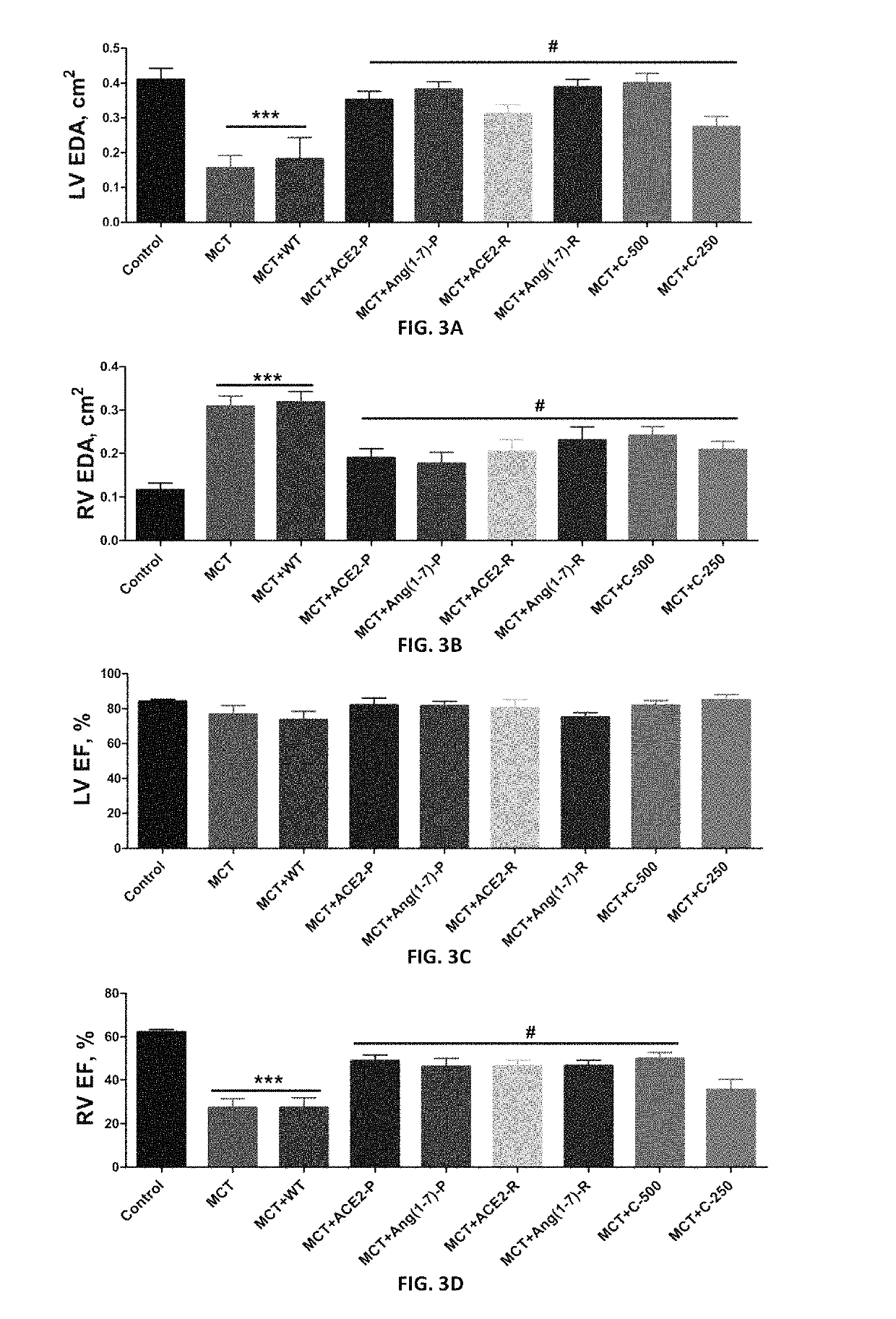Oral delivery of angiotensin converting enzyme 2 (ACE2) or angiotensin-(1-7) bioencapsulated in plant cells attenuates pulmonary hypertension, cardiac dysfunction and development of autoimmune and experimental induced ocular disorders
angiotensin converting enzyme and angiotensin-(1-7) bioencapsulation technology, applied in the direction of plant/algae/fungi/lichens ingredients, peptides, peptides, etc., can solve the problems of inability to reverse ph or decrease mortality, no current treatment is successful in reversing ph or decreasing mortality, and clinical use of ace inhibitors or at1r blockers has yielded mixed results. ,
- Summary
- Abstract
- Description
- Claims
- Application Information
AI Technical Summary
Benefits of technology
Problems solved by technology
Method used
Image
Examples
example 1
REFERENCES FOR EXAMPLE 1
[0088]1. Schermuly R T, Ghofrani H A, Wilkins M R, Grimminger F. Mechanisms of disease: pulmonary arterial hypertension. Nat Rev Cardiol 2011; 8:443-455.[0089]2. Sutendra G, Michelakis E D. Pulmonary arterial hypertension: Challenges in translational research and a vision for change. Sci Transl Med 2013; 5:208sr5.[0090]3. de Man F S, Tu L, Handoko M L, Rain S, Ruiter G, Francois C, Schalij I, Dorfmüller P, Simonneau G, Fadel E, Perros F, Boonstra A, Postmus P E, van der Velden J, Vonk-Noordegraaf A et al. Dysregulated renin-angiotensin-aldosterone system contributes to pulmonary arterial hypertension. Am J Respir Crit Care Med 2012; 186:780-789.[0091]4. Morrell N W, Atochina E N, Morris K G, Danilov S M, Stenmark K R. Angiotensin converting enzyme expression is increased in small pulmonary arteries of rats with hypoxia-induced pulmonary hypertension. J Clin Invest 1995; 96:1823-1833.[0092]5. Donoghue M, Hsieh F, Baronas E, Godbout K, Gosselin M, Stagliano N, ...
example 2
REFERENCES FOR EXAMPLE 2
[0185]1. Mochizuki M, Sugita S, Kamoi K (2013) Immunological homeostasis of the eye. Prog Retin Eye Res 33: 10-27.[0186]2. Read R W (2006) Uveitis: advances in understanding of pathogenesis and treatment. Curr Rheumatol Rep 8: 260-266.[0187]3. Rosenbaum J T, McDevitt H O, Guss R B, Egbert P R (1980) Endotoxin-induced uveitis in rats as a model for human disease. Nature 286: 611-613.[0188]4. Agarwal R K, Silver P B, Caspi R R (2012) Rodent models of experimental autoimmune uveitis. Methods Mol Biol 900: 443-469.[0189]5. Paul M, Poyan Mehr A, Kreutz R (2006) Physiology of local renin-angiotensin systems. Physiol Rev 86: 747-803.[0190]6. Santos R A, Ferreira A J, Verano-Braga T, Bader M (2013) Angiotensin-converting enzyme 2, angiotensin-(1-7) and Mas: new players of the renin-angiotensin system. J Endocrinol 216: R1-R17.[0191]7. Marian A J (2013) The discovery of the ACE2 gene. Circ Res 112: 1307-1309.[0192]8. Santos R A, Simoes e Silva A C, Maric C, Silva D M,...
example 3
Codon Optimization of ACE2 and Ang-(1-7)
[0238]In a recent study, Nakamura et al. disclose the importance of compatibility between the psbA 5′-UTR and its 5′ coding sequence when using codon-optimized heterologous genes. Previously reported codon optimization studies used only smaller eukaryotic coding sequences (200 kDa) that would require optimization of not only codons but also compatibility with regulatory sequences for optimal translation initiation, elongation and greater understanding of tRNAs encoded by the chloroplast genome or imported from the cytosol. However, no systematic study has been done to utilize the extensive knowledge gathered by sequencing several hundred chloroplast genomes to understand codon usage and frequency of highly expressed chloroplast genes.
[0239]Among the 140 transgenes expressed in chloroplasts, >75% use the psbA regulatory sequences (Daniell et al., 2016). Most importantly, compatibility between the 5′-UTR of psbA and its coding region is importan...
PUM
| Property | Measurement | Unit |
|---|---|---|
| thickness | aaaaa | aaaaa |
| thickness | aaaaa | aaaaa |
| wall thickness | aaaaa | aaaaa |
Abstract
Description
Claims
Application Information
 Login to View More
Login to View More - R&D
- Intellectual Property
- Life Sciences
- Materials
- Tech Scout
- Unparalleled Data Quality
- Higher Quality Content
- 60% Fewer Hallucinations
Browse by: Latest US Patents, China's latest patents, Technical Efficacy Thesaurus, Application Domain, Technology Topic, Popular Technical Reports.
© 2025 PatSnap. All rights reserved.Legal|Privacy policy|Modern Slavery Act Transparency Statement|Sitemap|About US| Contact US: help@patsnap.com



